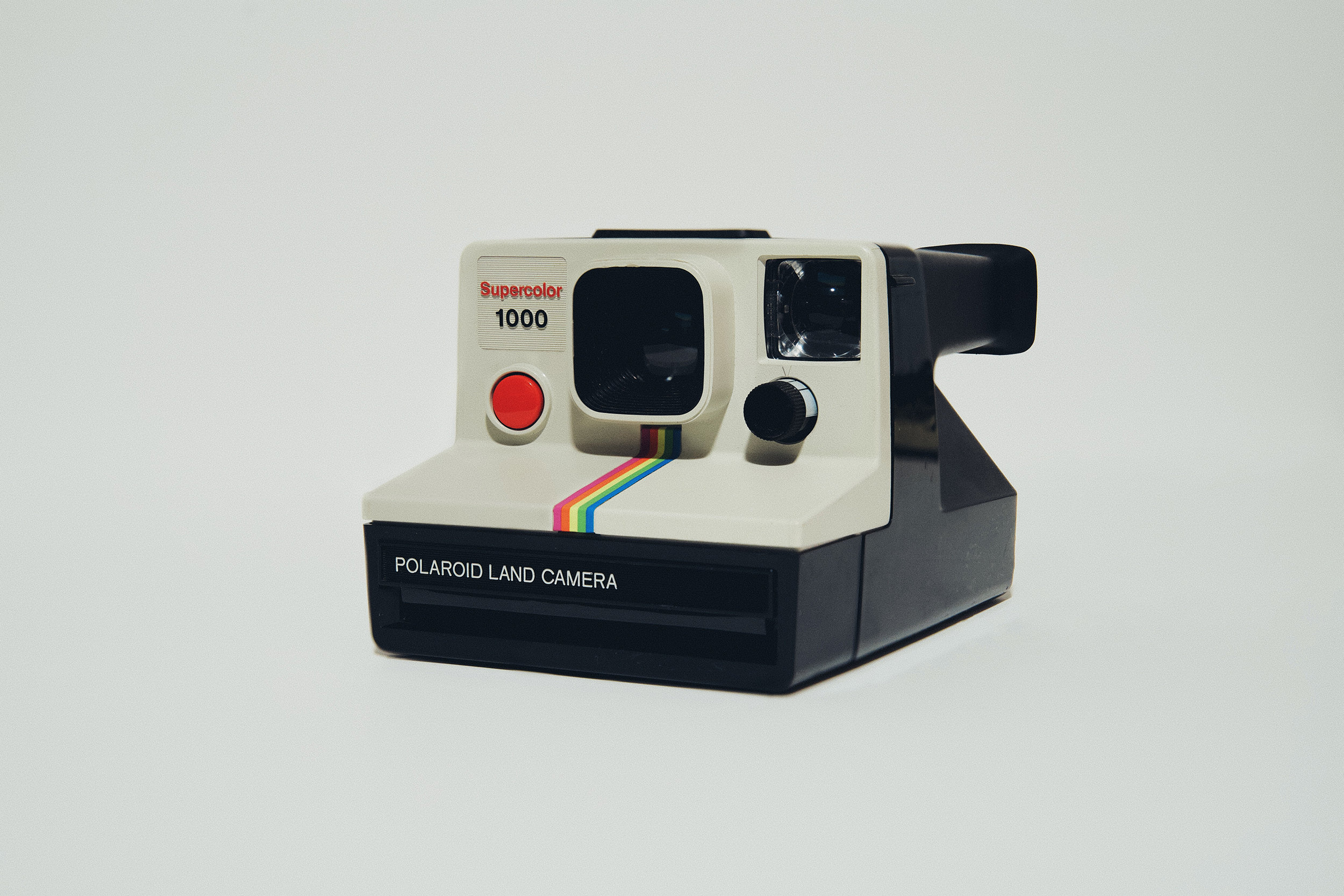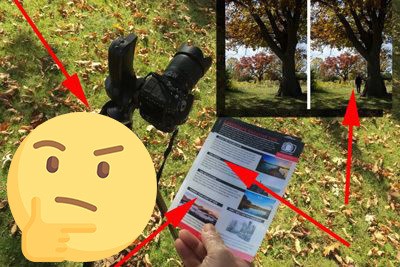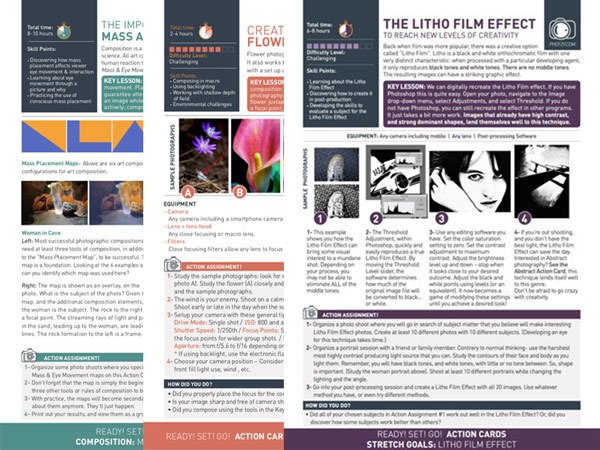Long before digital cameras and smartphones were invented, there was another way to see an image instantly. Polaroid cameras and instant film allowed users to see their shots within minutes, giving them one of the iconic Polaroid prints to hold in their hands. In this guide, I will look at Polaroid’s history, its position in the modern world, and a few creative techniques that produce stunning results.
Here’s what we’ll cover:
- The History of Polaroid
- Instant film in the modern world
- Creative techniques
Recommended Reading: If you want to avoid boredom and repetition in your photography, you can inject some creativity into your work by using the fun and challenging assignments in our Creativity Catalog. Go here now to take a look!

The first Polaroid cameras used black and white instant film. Photograph by Annie Spratt
The History of Polaroid
The Polaroid Corporation was founded by American scientist Edwin H. Land in 1937, but its original purpose had nothing to do with instant photography. Polaroid used polarizer technology to produce a variety of products, from the more sensible polarized sunglasses through to the slightly more madcap goggles for dogs! During World War II, the company designed products for the armed services.
During a family vacation in 1944, Land’s daughter asked him why she couldn’t instantly see the photo he’d just taken of her on his Rolleiflex. Land claimed that within the same day, he’d come up with the camera design, film, and chemistry that would be needed, but it was another three years before instant camera film was presented to the public.
In 1948 Land introduced the Polaroid Land Model 95, bringing instant images to the hands of consumers. The camera had two separate positive and negative rolls, which allowed the image to develop inside the camera. Its release represented a major milestone in the history of photography. Suddenly photography, which had up until this point been a time-consuming and expensive process, was something that could be done in a matter of minutes.

Overexposing Polaroids can lead to soft and dreamy effects. Photograph by Ivan Shimko
Polaroid seriously underestimated the demand for their camera, producing only 60 units of the camera, to begin with. They all sold out within a day. The cameras were still the preserve of the affluent, though, as they weren’t exactly cheap. But during the 1950s and 1960s, Polaroid began to produce smaller, better cameras with a less eye-watering price tag. They produced the first color film in the Colorpack camera in 1963 and the cheaper Swinger model (aimed at teens) in 1965. As demand continued to increase, Polaroid struggled to keep up and, in the early 1960s, they contracted Kodak to manufacture their peel-apart pack film and hired Fujifilm to assist with film improvements and developments.
Although Polaroid sales had reached $400 million in the late 1960s, Land never stopped looking at ways to make the cameras more portable and compact. His work led to the extremely popular SX-70 model, which shot in auto mode and sported the now-famous collapsible design. At the same time, Polaroid recruited some of the world’s best artists of the time to test its products. Ansel Adams, David Hockney, and Andy Warhol were provided with free film and studio space and invited to shoot whatever they wanted. The only proviso was that the finished prints were returned to Polaroid’s Collection Committee. Expanding to Europe, leading photographers such as David Bailey, Helmut Newton, and Sarah Moon joined the project, with the works forming the basis for the International Polaroid Collection. This collection grew through the 1970s and 1980s and was displayed as The Polaroid Project in 2018 at the Museum für Kunst und Gewerbe Hamburg in Hamburg, Germany.
Although Polaroid sales had reached $400 million in the late 1960s, Land never stopped looking at ways to make the cameras more portable and compact.
Land stepped down from the company soon after a reasonably disastrous initiative that attempted to apply the instant photography idea to an 8mm movie system that could produce instant moving pictures. The resulting ‘Polavision’ only sold 60,000 units and was discontinued in 1979. The company faced stiff competition from Kodak, who released a similar instant camera, but Polaroid successfully sued Kodak for a whopping $909 million for copying seven of their photography patents. Kodak had actually released their instant cameras and film in 1976, but it took over a decade for the courts to make a final ruling.
Despite this, Polaroid was gradually declining. The company relied on film sales, but 35mm cameras were now cheaper, easier to use, and delivered higher-quality prints. The Nikon and Canon photography giants were now in full swing, and the advent of digital photography proved the nail in Polaroid’s coffin. In 2001 they declared bankruptcy.
Instant Film in the Modern Age
The art of instant photography’s day looked to be over and, in 2008, Polaroid officially announced that they would be ceasing production of their analog film products. Meanwhile, Fujifilm launched their own instant Fotorama instant camera line in 1981, approaching Polaroid for permission. Polaroid agreed as long as Fujifilm didn’t sell their instant cameras in North America. Fast-forward to 1998 and Fujifilm introduced the Instax line with the Instax Mini 10 camera. Fujifilm didn’t start selling Instax in America until Polaroid discontinued film production and considered joining Polaroid in pulling out of instant film photography.
But then, in 2007, an Instax camera was featured prominently in a South Korean television series, and demand for them soared. Featured in another South Korean show in 2009, the popularity of Instax spread across Asia and then to the rest of the world. Instax is now Fujifilm’s top-selling camera line, selling 10 million in 2019.
And what about Polaroid? In 2008, just after Polaroid had announced they would be ceasing production, a small group of instant photography fans saved the last remaining Polaroid factory in the Netherlands. The factory’s machines were broken, suppliers were out of business, and many chemical formulas had been lost. The Impossible Project developed new instant film products for use in some existing Polaroid cameras and developed new products, reviving the Polaroid brand into the modern world.
Creative Techniques
One of the great things about Polaroids is the fact that they can be manipulated easily. There are numerous creative Polaroid techniques out there, ranging from extremely simple through to fairly complex. I’m going to run you through a few, but there are many more to try if you get a taste for creative manipulation.
Overexposure
One of the golden rules of Polaroid photography is not to expose the print to sunlight as it’s developing. Doing so runs the risk of the image being overexposed. But of course, you can ignore this rule if you want to add a little creative effect to your Polaroid. Experiment with exposing either fully or partially in sunlight to give your image a softer and dreamier look. You can also shake the Polaroid as it develops to create a slightly damaged effect.
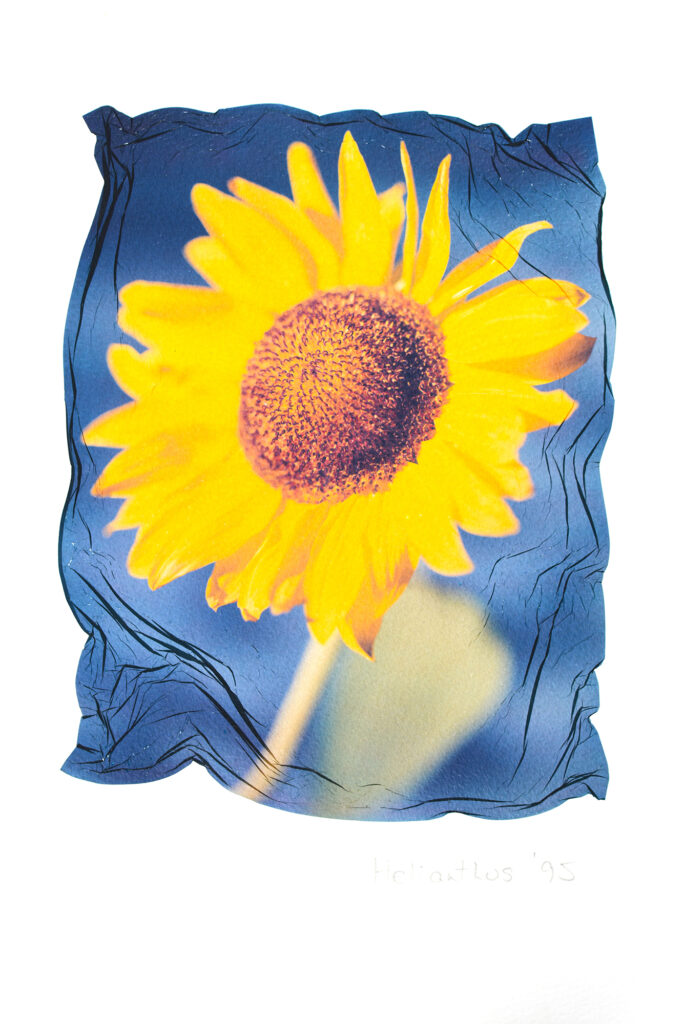
Photograph by Dazeley
Writing or Doodling on a Polaroid
This incredibly simple technique requires a fresh Polaroid and a blunt tool (such as the end of a brush). Polaroids are soft and easy to manipulate when they haven’t developed so, as soon as your Polaroid comes out, start to gently apply pressure with your tool. You can draw doodles or even write something. The more pressure you apply, the stronger your lines will be, but do take care not to press too hard or you could damage the Polaroid.
Transparency
You can turn a Polaroid transparent with a little care, and these images can create quite a surreal and unusual effect. Before you start, make sure you put on gloves as the chemicals in Polaroids are concentrated and therefore could be damaging to the skin. Using a sharp box cutter knife, cut the sides and bottom of your Polaroid. Once you cut the bottom open, you’ll see a flap. Use this to gently peel apart your image and leave just the picture on the front plastic window. When you reach the top, cut it with a knife. You will now have a perfectly transparent image. At this point, you may find it useful to blow dry it with a hairdryer (on a low setting) in case there are any damp chemicals left.

Self-portrait of Dazeley
Emulsion Transfers
In my mind, Polaroid emulsion transfers (or emulsion lifts) produce some of the most beautiful and delicate results – really showcasing the creative possibilities of the medium. Renowned London advertising photographer Peter Dazeley (known professionally as Dazeley) has won awards for his Polaroid transfers, which have also been featured in numerous magazines. The images included here were shot on a Sinar P2 10×8 inch camera on 809 color Polaroid film before being processed on a 10×8 inch Polaroid processing machine (you don’t need to have a machine to achieve these transfers by the way!).
In my mind, Polaroid emulsion transfers (or emulsion lifts) produce some of the most beautiful and delicate results – really showcasing the creative possibilities of the medium.
Soak your Polaroids in a developing tray of hot water for a few hours until the emulsion begins to lift away from the backing paper. You can use a paintbrush to loosen any stubborn remaining pieces. Once the emulsion is free and floating in the now-cool water, slide a thin sheet of glass underneath. Carefully lift the glass sheet out of the developing tray and immediately transfer it to a large sheet of watercolor paper (Dazeley recommends French watercolor paper), using a paintbrush and gravity to slide it onto the paper. You can alternatively add the watercolor paper to the water and paint the Polaroid image directly onto it before lifting it out of the water.
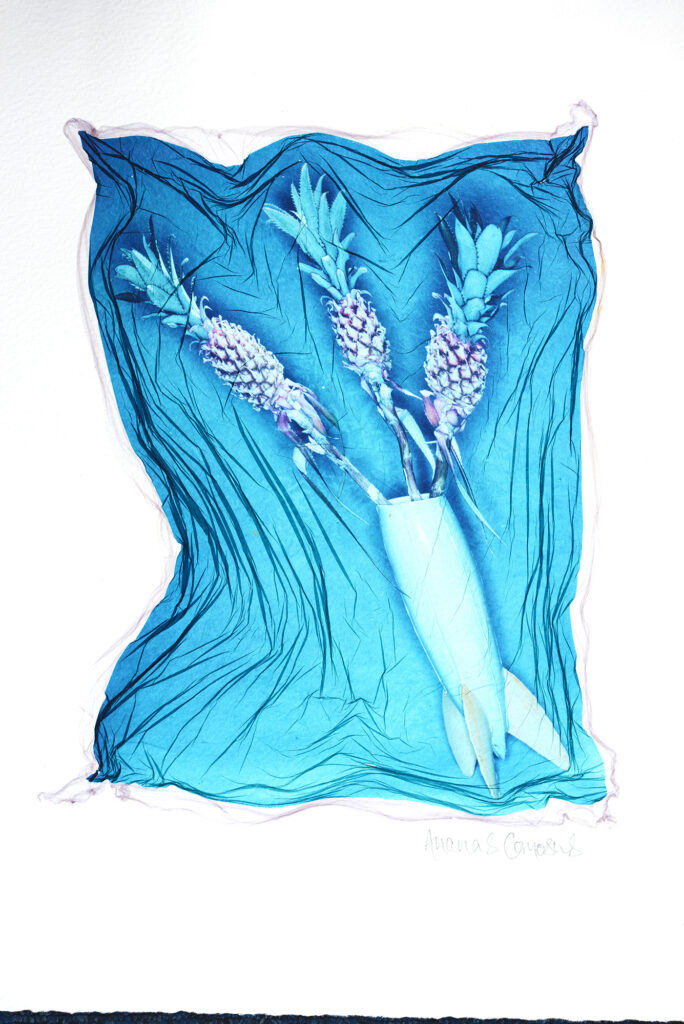
Photograph by Dazeley
While everything is still wet, you can manipulate the emulsion on the paper into the shape you desire, using the paintbrush. The final result can then be left to dry naturally. Dazeley points out that, “The technique itself, although very simple, involves an extreme amount of patience and skill. The key is removing the emulsion in one piece; once removed, the emulsion is extremely delicate and can be easily broken.”
Emulsion transfers can be transferred to several materials, and you can even hand-color them once they’re dry.

Photograph by Dazeley
Conclusion
I hope you’ve enjoyed learning about the history of Polaroid photography and perhaps even been inspired to try out some techniques yourself. Have fun!

Recommended Reading: If you want to avoid boredom and repetition in your photography, you can inject some creativity into your work by using the fun and challenging assignments in our Creativity Catalog. Go here now to take a look!
Self-Check Quiz:
- How is surreal photography more than simply changing reality in post-processing?
- How can Intentional Motion Blur be used to create surreal images?
- Define juxtaposition in terms of photography.
- What are three examples of juxtaposition?
- How is forced perspective surreal?
- Describe how you might set up a forced perspective image.
- How can you make people or objects appear to levitate?
- What is a dispersion effect?
- What is another word for a composite image?
- How is a composite image created?


